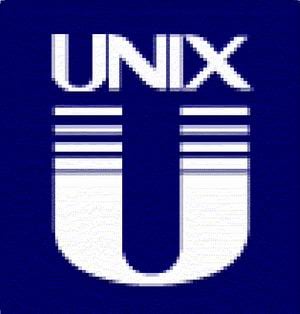One would not normally associate Microsoft with Unix. While Microsoft’s interest(s) in Unix may remain minimal in recent times, history tells a very different story.
Let us take a quick journey down memory lane, back to the late 1970’s and into the early-mid 80’s. In 1979, Microsoft formed an agreement with AT&T Corporation to license Unix from AT&T. And then Microsoft licensed out its renamed Unix to OEM vendors, including Intel, Tandy and SCO. Those companies then ported it to their own hardware architectures and requirements.
Microsoft was hit by a legal problem of the “UNIX” name not being able to be used. Therefore, Microsoft was forced to come up with their own Unix distribution name. Xenix was chosen. AT&T licensed Unix to Microsoft and then Microsoft passed on the same Unix software re-branded as Xenix.
Microsoft’s intention was to take Xenix to the 16bit microcomputer market. The initial port of Xenix was to the Zilog Z8000 series and then followed on the the Intel 8086/8088 architecture.
By the time Microsoft reached the 7th edition, it was incorporating elements of BSD. Xenix became the most widely installed base of any Unix distribution. This was largely due to the continued popularity of the relatively inexpensive x86 processor.
There was lots of modifications being done to Xenix by many different companies. Microsoft Xenix originally run on the PDP-11. It was then ported to the Zilog Z8001. Altos ported it to their Intel 8086 based computers. Tandy Corporation ported it to their 68000 based computers. And SCO released a port to the IBM PC in September 1983. There was even a port for the 68000 based Apple Lisa.
During this time, Xenix was based on AT&T’s Unix System III. Xenix version 2.0 was released in 1985, based on Unix System V. Microsoft then released the updated 2.1.1, which added support for the Intel 80286 processor. There were several more compatibility releases based on Unix System V.
In 1987, SCO ported Xenix to the Intel 386 processor, which was a 32bit based chip. Xenix 2.3.1 was released and included support for i386, SCSI and TCP/IP. SCO’s Xenix system was the first 32bit operating system available for the x86 architecture.
By the mid 1980’s, Microsoft signed an agreement with IBM to develop OS/2. The code name for the project would be called CP/DOS. As Microsoft continued to develop CP/DOS with IBM, they gradually lost interest in Xenix. It took 2 years for IBM and Microsoft to develop the first release of CP/DOS, which was released with the name OS/2. It was released in 1987. And in the same year, ownership of Xenix was transferred to SCO. The agreement left Microsoft with a 25% ownership in SCO. History would repeat itself with Microsoft and OS/2. Microsoft lost interest in OS/2 development and focused its future and company strategy towards Windows NT.
Despite Microsoft losing almost complete interest in Xenix, the company is said to have used Xenix internally right up until 1993.
SCO released SCO Unix which was based on System V Release 3. SCO had included a number of improvements over Xenix. Although, Xenix did remain in the services line-up for SCO. AT&T and Sun Microsystems collaborated on merging portions of Xenix, BSD, SunOS and System V in to what became System V Release 4. Although SCO Unix was based on System V Release 3, it did include most of the advanced features that were included to make up System V Release 4.
The last version of Xenix ever released was Xenix 2.3.4. At that time, Microsoft had little or nothing to do with the release or development.
The Santa Cruz Operation (SCO) has gone through several transitions of company organization and re-structuring. The former SCO and SCO Group are now owned by UnXis Inc. Derivatives of Xenix and SCO Unix continue on today and is now known as SCO OpenServer. It could be considered that if Xenix development had of continued, OpenServer is what it would now have been. The latest OpenServer 6.0 release still maintains backward-compatibility for software applications developed for Xenix 286 forwards.
Wikipedia proved to be a great resource for my research on Xenix and provided me with enough information to write this article. Anyone can go to Wikipedia and read the whole story for themselves. But I have attempted to simplify the details in to a more friendly and readable format. Personally, I find it an interesting story to find that early in Microsoft’s history as an IT company, for many years there was a serious reliance on Unix based operating systems for its initial survival. And it probably ensured their long term survival too. And whether you agree with all the past, present and future decisions that Microsoft make, they’re an interesting company to observe and one that always presents an interesting story.
It’s also worth noting, although Microsoft don’t necessarily have a Unix or Linux based system available nowadays, they do contribute code to the Linux kernel and other software projects. And just this year, they also rebooted their open-source initiative with the launch a new department titled Microsoft Open Technologies. They can’t really be famed for actually releasing any code for their own services line-up, but there are signs that Microsoft is beginning to accept that free and open-source technology is a real and viable alternative to proprietary. The best thing we can at least expect is interoperability and compatibility with FOSS alternatives.





